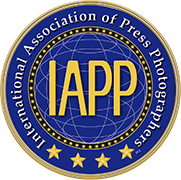Introduction
Turning a passion for journalism into a full-time career can be challenging. For part-time journalists, building a sustainable career often requires building strong connections, showcasing professional references, and gaining access to better assignments. The International Association of Press Photographers (IAPP) can play a crucial role in helping journalists achieve these goals.
This guide outlines actionable steps for part-time journalists to become full-time employees with the support of the IAPP.
Step 1: Build a strong portfolio

A well-organized and impressive portfolio is crucial to demonstrate your skills to potential employers or clients.
Tips for building a compelling portfolio:
- Showcase diverse work: Add breaking news, investigative stories, features, and visual content to highlight versatility.
- Focus on quality: Showcase only your best work and make sure each piece shows strong storytelling skills.
- Add context: Accompany each portfolio piece with brief descriptions explaining your role, the challenges of the task, and key deliverables.
- Create an online portfolio: Use platforms like WordPress, Wix, or Squarespace to showcase your work digitally.
- Incorporate visuals: Add images, videos, and infographics to improve engagement and demonstrate multimedia skills.
A well-curated portfolio shows editors and media that you’re serious about your craft. It highlights your ability to adapt to different themes and formats, giving you a competitive edge in securing orders.
Step 2: Take advantage of IAPP membership
IAPP provides members with valuable tools and resources to help them succeed in the journalism industry.
Key benefits of IAPP membership:
- Press passes: Gain professional recognition and access to events, press conferences and exclusive media areas.
- Networking opportunities: Network with established journalists, editors, and media professionals.
- Educational resources: Access workshops, training, and journalism best practices.
- Portfolio Review Services: Get expert feedback to refine your work and improve your presentation.
- Job boards and tasks: Discover exclusive job opportunities and freelance opportunities offered through IAPP.
If you take advantage of these benefits, you will have an advantage when presenting stories or applying for high-profile assignments. IAPP references improve your credibility and make editors more inclined to trust your professionalism and skills.
Step 3: Establish a consistent workflow
The compatibility of part-time work and full-time employment requires structure and discipline.
Workflow Tips:
- Create a content calendar: Organize your story ideas, deadlines, and pitch timelines to stay on track.
- Pitch regularly: Develop a habit of sending well-researched pitches to editors and media.
- Build relationships: Maintain regular contact with editors and follow up on previous submissions.
- Diversify your sources: Identify multiple channels for jobs, including local newspapers, online publications, and magazines.
- Develop niche expertise: Specializing in a topic such as politics, sports, or investigative reporting can help you get targeted assignments.
By maintaining a clear workflow, you’ll stay organized and productive, ensuring you’re constantly generating new content ideas and never missing a pitch opportunity.
Step 4: Expand your skills

Journalism requires adaptability, especially as media trends shift towards digital storytelling.
Skills to be developed:
- Photography and videography: Visual content is becoming increasingly important in news reporting.
- Social media engagement: Learn to promote your work and build a following.
- Data journalism: Master data analysis tools to improve your investigative work.
- Interview techniques: Refine your ability to ask probing questions and extract persuasive quotes.
Expanding your skills not only diversifies the type of content you can produce, but also makes you a more valuable contributor to media organizations seeking journalists with multimedia expertise.
Step 5: Improve your visibility as a journalist
Creating a strong public profile will help you establish your authority and attract new customers.
Ways to increase your visibility:
- Publish guest articles: Contribute opinion articles, reports or photo essays to major publications.
- Attend media events: Build connections by attending press conferences, conferences, and media networking events.
- Promote your work: Use social media platforms like LinkedIn, Twitter, and Instagram to showcase your latest assignments.
- Create a professional bio: Write a compelling bio that outlines your expertise, experience, and achievements.
Visibility is crucial in journalism. By actively sharing your work, attending industry events, and maintaining a professional presence, you’ll build stronger recognition with editors and potential clients.
Step 6: Seek mentorship and advice
The IAPP connects journalists with experienced mentors who can provide them with personal advice and guide their careers.
This is how you can benefit from mentoring:
- Request feedback: Ask mentors to critique your work and suggest improvements.
- Discuss career strategies: Learn how to identify high-value assignments, improve pitch quality, and expand your network.
- Look for industry insights: Get tips on how to navigate the journalism landscape and build lasting relationships with editors.
Strong mentorship can accelerate your career by providing valuable insights from experienced professionals who understand the complexities of the industry.
Step 7: Get Accreditation and Recognition

Professional accreditation increases credibility and makes it easier to secure contracts and gain trust with sources.
Advantages of IAPP accreditation:
- Improved access: Accredited journalists are more likely to secure interviews and gain access to exclusive media areas.
- Improved professionalism: Accreditation demonstrates your commitment to ethical and credible journalism.
- Career advancement: References strengthen your reputation and make you more attractive to potential employers.
Accreditation adds weight to your name, especially if you’re working on sensitive stories or reaching out to high-profile contacts. It solidifies your position as a credible and trustworthy journalist.
Step 8: Transition to full-time employment
Once your portfolio is polished, your network is built, and you’ve gained momentum, focus on securing more consistent orders.
Tips for getting started in full-time journalism:
- Look for retainer arrangements: Offer your services as a regular contributor to ensure consistent income.
- Apply for employee roles: Explore job openings at major news outlets that match your expertise.
- Building partnerships: Work with photographers, writers, and designers to expand your skills and produce comprehensive reports.
- Follow up on leads: Persistence is key – consistently present ideas, revise old contacts, and take advantage of every opportunity.
The transition from part-time to full-time journalism can be exhausting, but if you persist and seize opportunities when they present themselves, you can steadily build a rewarding career.
Inference
Becoming a full-time journalist requires commitment, skill building, and strategic networking. By leveraging the resources offered by the IAPP, journalists can increase their chances of turning a part-time job into a successful full-time career. Through accreditation, networking and skills development, IAPP enables journalists to improve their craft and achieve professional success. With persistence and the right strategies, you can confidently pursue your goal of becoming a full-time journalist.

